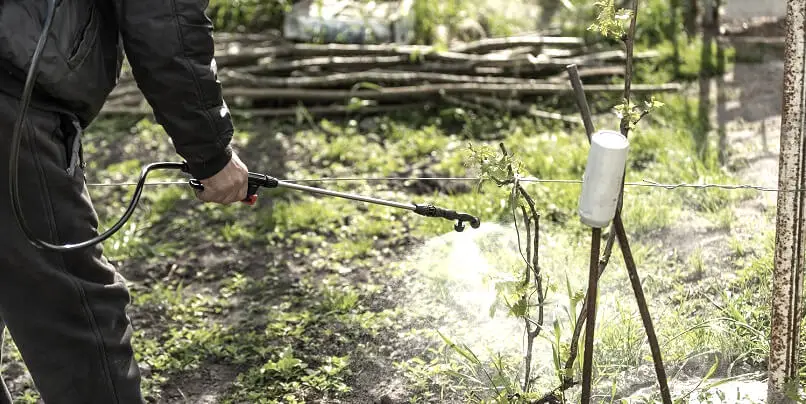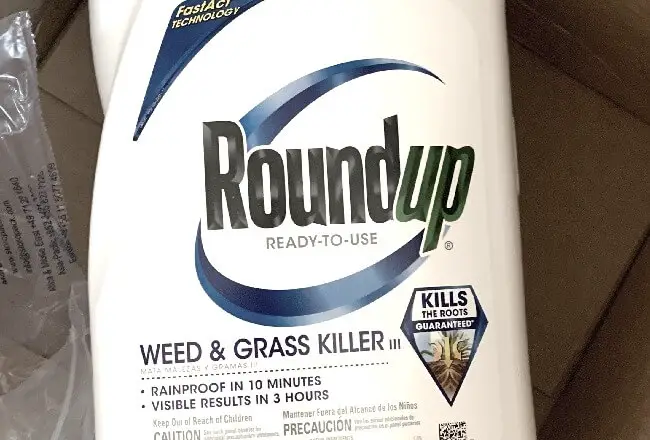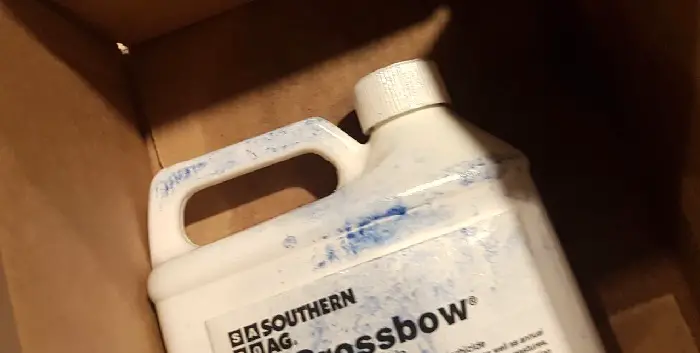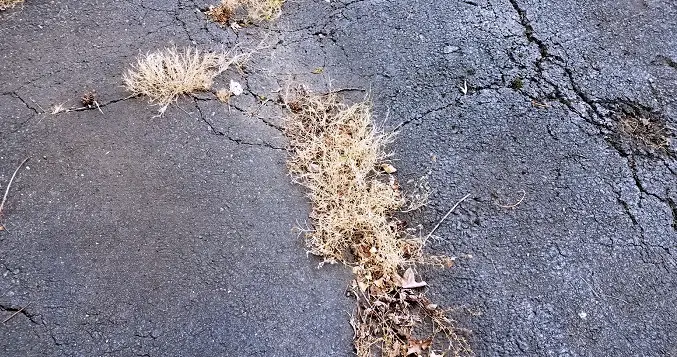Crossbow vs Roundup Herbicide

Both are known for their effective weed control and wield distinct characteristics that make them suitable for different applications. This article dives into a detailed comparison of these two herbicides from selectivity and target plants to cost and usage timing. By examining their unique strengths and limitations, we’ll guide you toward the best solution for your weed control needs.
Roundup Vs Crossbow Table
We will compare and contrast them to help you make an informed decision based on your specific needs.
Crossbow | Roundup |
Active Ingredients Triclopyr | Active Ingredients Glyphosate |
For Crossbow, it can take 7 to 14 days to see results. | Visible results can be observed within 3 hours of application. |
Crossbow is a herbicide that only affects certain plants and doesn't harm others. | Roundup is a non-selective herbicide, meaning it will kill nearly all plants it comes into contact |
Crossbow can be used year-round | Roundup is most effective when used in the spring. |
Thanks to its active ingredients, effective at killing woody plants like ivy, vines, brambles, brush, and other grass. | Roundup is effective against all types of weeds and grass but not against woody plants. |
Crossbow takes about 6 hours to become rainfast. | Roundup is rainfast within 30 minutes of application |
It can be applied on rangeland, permanent grass pastures, conservation reserve program (CRP) acres, fence rows, non-irrigation ditchbanks, roadsides, other non-crop areas | It can use in and around vegetable gardens, flower beds, tree rings, and mulched beds, as well as on cracks in driveways, walkways, and patios. |
For spot treatment, use 4 to 6 fl oz of Crossbow in 3 gallons of water and spray to thoroughly | It is intended to be sprayed thoroughly on weeds or grasses for it to work |
Selectivity
Roundup is a non-selective herbicide, meaning it will kill nearly all plants it comes into contact with, including grasses. This makes it suitable for general weed control in areas where you don’t want any vegetation, like driveways and walkways.
Crossbow is a selective herbicide that targets specific types of plants while leaving others unharmed. It is particularly effective against woody plants and broadleaf weeds but won’t harm most grasses. This makes it more suitable for weed control in pastures and rangelands.
Targets
Crossbow is a selective herbicide that targets broadleaf weeds, ivy, and some woody plants. It is less effective against grassy weeds but won’t harm most types of grass. This makes it an ideal solution for lawn owners who wish to get rid of broadleaf weeds without affecting their turf.
Roundup, on the contrary, is a non-selective herbicide. It attacks virtually all types of plants whose leaves are sprayed, including grassy weeds like crabgrass and nutsedge. It can also damage or kill lawn grass if accidentally sprayed, making it a potent but less precise solution for weed control.
Cost
While the upfront cost of Roundup is usually higher than that of Crossbow, the overall cost can vary based on your specific situation. Roundup’s broad-spectrum action might require fewer applications to control a variety of weeds, potentially lowering the overall cost.

However, Crossbow, though less expensive initially, might require more frequent applications, especially for stubborn weed problems, which could increase the total expense over time.
Timing of Use
Timing of use is another important factor to consider. Roundup is most effective when used in the spring. This is because glyphosate, one of its active ingredients, is most effectively absorbed by actively growing plants. Therefore, spring, when most plants are in a phase of vigorous growth, is the best time to use Roundup.
Crossbows, however, can be used throughout the year. Its active ingredients, 2,4-D and Triclopyr, are effective against many broadleaf weeds and woody plants in various growth stages. This allows for greater flexibility in timing the applications, which is especially beneficial for dealing with plants that may not follow traditional growth patterns.
Usage
Roundup is safe to use in and around vegetable gardens, flower beds, tree rings, and mulched beds, as well as on cracks in driveways, walkways, and patios.
Crossbow, on the other hand, is primarily used on rangeland, permanent grass pastures, conservation reserve program acres, fence rows, non-irrigation ditch banks, roadsides, and other non-crop areas, including industrial sites. It is not recommended for use in home lawns.
Effectiveness
Crossbow is especially effective at killing woody plants like ivy, vines, brambles, and brush, thanks to its active ingredients. Crossbow does not harm grass and grassy weeds, making it suitable for lawns and fields.
Conversely, Roundup will harm all plants it comes into contact with, including grass. Roundup, which contains Glyphosate, is not as effective against woody plants.

Soil Activity
Roundup is inert in soil, meaning it won’t harm plants that were not directly sprayed with the herbicide. Crossbow, however, remains active in the soil for up to 6 weeks and may drift and harm nearby plants due to runoff.
Active Ingredients
Roundup contains glyphosate and pelargonic acid as its active ingredients. Glyphosate is a broad-spectrum systemic herbicide that works by inhibiting a plant-specific enzyme necessary for the plant’s growth. This means it can kill most plant types it comes into contact with.
Pelargonic acid, on the other hand, is an organic compound usually employed as a burning agent in herbicides; it acts fast and causes visible damage to plants within hours. In combination, these two chemicals make Roundup a powerful tool against a wide range of weeds and unwanted plants.
Crossbow, on the other hand, uses 2,4-D and Triclopyr as its active ingredients. These chemicals are selective herbicides, specifically targeting broadleaf plants while sparing most grasses. 2,4-D mimics the plant growth hormone, causing the plant to grow uncontrollably and eventually die, while Triclopyr is effective against woody plants and some broadleaf weeds. Together, these ingredients allow Crossbow to effectively control a variety of broadleaf and woody plants without damaging grass.

Rainfast Duration
Rainfast duration is the time it takes for a herbicide to dry and be absorbed by plants, after which rain or irrigation will not wash it away. Crossbow takes about 6 hours to become rainfast.
This means that, after application, there should ideally be at least 6 hours of dry weather to allow the herbicide to be adequately absorbed by the plants. On the other hand, Roundup is rainfast within 30 minutes of application, making it a more reliable option in regions with frequent or unpredictable rainfall.
Observation
In terms of selectivity, cost-effectiveness, and usage flexibility, Crossbow stands out as an optimal choice, especially for managing broadleaf and woody plants in pastures and non-crop areas without harming grasses. It’s cost-effective initially, although it may require more frequent applications for stubborn weed problems.
Conversely, Roundup serves as a powerful, non-selective herbicide that targets almost all plant types, making it highly effective for weed control in areas without desired vegetation. It is rainfast more quickly than Crossbow, useful in regions with unpredictable weather.
However, caution must be taken due to its broad-spectrum action, which might damage or kill non-target plants, including grasses. In conclusion, while both have their strengths, the choice between Crossbow and Roundup ultimately depends on the specific needs of your situation.
Related Article

James E. Butkovich, Pest control maven with a knack for eco-friendly & Chemical solutions. Blogger with a mission to make homes pest-free, one post at a time.

